Step into 2025, where interior design is more than just decoration—it is a catalyst for transformation, wellness, and creativity. If you are ready to take control of your space, this interior design step by step guide will walk you through every stage, from defining your unique vision to the final reveal.
You will discover how to plan effectively, choose the right materials, manage execution, and add those finishing touches that make a house a home. Expect insights on 2025’s top trends, expert tips, and actionable steps that ensure your project’s success.
Ready to turn inspiration into reality? Follow this blueprint and master your own interior design journey this year.
Step 1: Define Your Vision and Goals
Defining your vision is the cornerstone of any successful interior design step by step journey. Before you even pick up a paint swatch, you need to clarify what you want to achieve and why. Establishing clear goals sets the direction for every decision you make, from the floor plan to the final accessories.
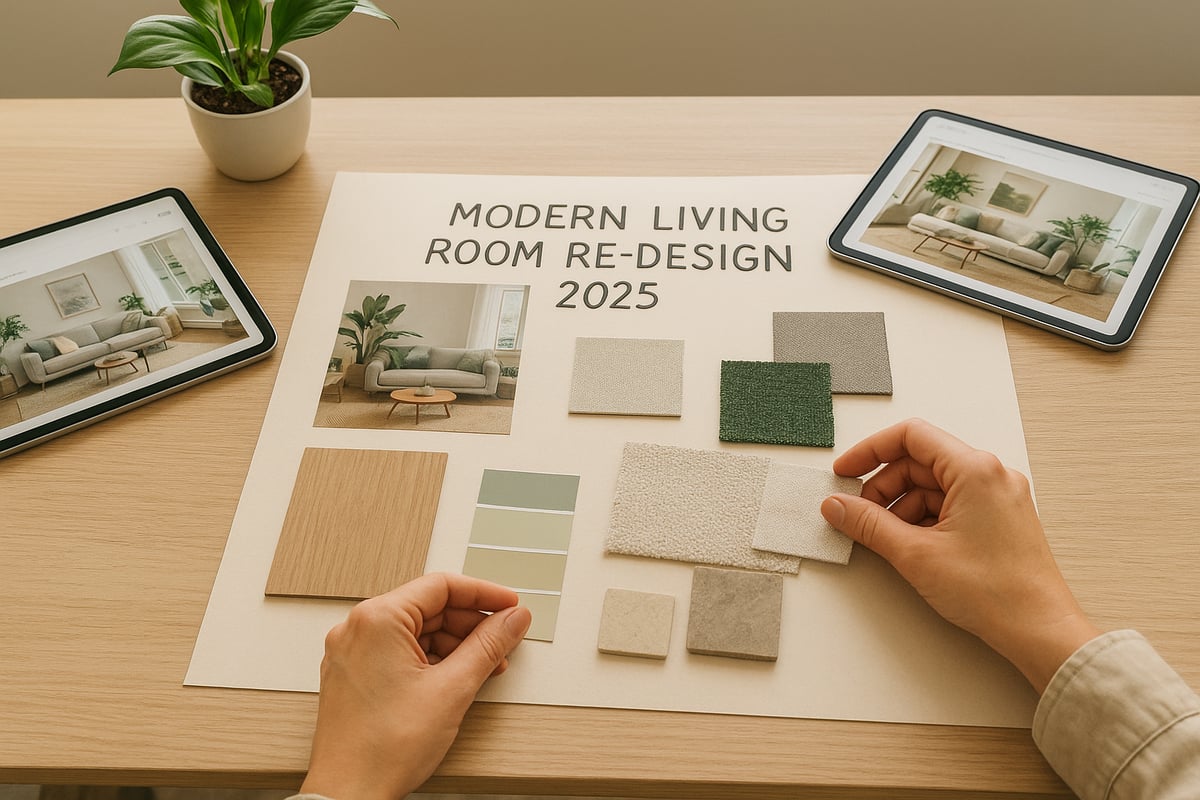
Clarifying Your Design Objectives
Start your interior design step by step process by identifying your “why.” Are you seeking a more functional family space, a calm retreat, or a statement-making entertaining area? Defining your desired outcomes helps you prioritize both function and aesthetics.
Set goals for how you want each space to feel and perform. Improved flow, mood enhancement, and productivity boosts are common objectives. For inspiration, gather ideas from mood boards, Pinterest, and design magazines. Exploring resources like Home Decor Project Ideas 2025 can spark creativity and ground your vision in current trends.
Factor in your lifestyle needs, family size, and whether pets will share the space. In 2025, leading trends include biophilic design, sustainable materials, and smart home integration. For example, transforming a dated living room into a multi-functional family hub blends comfort, technology, and eco-consciousness.
Avoid these common mistakes:
- Starting without a clear vision
- Ignoring practical needs
- Overlooking family or pet requirements
- Following trends blindly without personalizing
A thoughtful start ensures your interior design step by step plan leads to a space you love.
Establishing Your Budget and Timeline
After setting your vision, align your interior design step by step goals with a realistic budget and timeline. Begin by listing all expected expenses. Typical categories include design fees, materials, labor, and a contingency fund.
| Budget Category | Percentage of Total Budget |
|---|---|
| Design Fees | 10-15% |
| Materials | 40-45% |
| Labor | 35-40% |
| Contingency | 10-15% |
Set milestones for each phase, such as design completion, ordering materials, and final installation. Build in flexibility to accommodate unexpected costs or delays. Digital tools and budget-tracking apps are invaluable for monitoring progress and spending.
For instance, a kitchen remodel in 2025 may require extra time for sourcing sustainable finishes or waiting for custom cabinetry. By staying organized and flexible, your interior design step by step project remains on track and less stressful.
Careful planning at this stage empowers you to move forward with confidence, ensuring that every decision aligns with your ultimate vision.
Step 2: Space Assessment and Planning
Transforming your home with an interior design step by step approach means starting with a deep understanding of your existing space. Before you bring in color swatches or shop for furniture, you must analyze and plan with precision. This stage lays the foundation for a seamless project, helping you avoid costly mistakes and ensuring your vision becomes reality.
Conducting a Thorough Space Analysis
Accurate space analysis is the first step in any interior design step by step process. Begin by measuring all dimensions, including ceiling height, windows, and doorways. Document these with sketches, notes, or digital tools. Pay close attention to architectural features such as niches, beams, and columns, as these will influence layout options.
Evaluate the natural light throughout the day. Observe how sunlight moves and where shadows fall. This insight informs furniture placement and lighting choices. Assess the traffic flow, identifying paths people naturally take through the space. Pinpoint problem areas, like awkward corners or underused zones, and look for opportunities to maximize function.
Take inventory of existing furniture and decor. Decide what to keep, repurpose, or replace. For visual clarity, try using 3D modeling or floor plan software to create a virtual replica of your room. For example, reimagining a compact studio apartment with digital tools can reveal creative storage solutions and improve livability.
Creating a Functional Layout
With your analysis complete, use your findings to shape a functional layout. Space planning is central to the interior design step by step method. Focus on balance and proportion. Group related activities, such as lounging or dining, into zones. Choose between an open layout, which promotes connection and light, or a closed layout for privacy and defined spaces.
Allocate space for storage and movement, ensuring clear pathways. Identify focal points, such as a fireplace or window view, and arrange furniture to highlight them. Incorporate universal design principles so your home remains accessible to all ages and abilities.
A before-and-after floor plan can illustrate the impact of thoughtful planning. For instance, transforming a cramped home office into a productive, organized space often starts with repositioning the desk for optimal light and adding built-in shelves for storage.
| Feature | Open Layout | Closed Layout |
|---|---|---|
| Flow | Uninterrupted | Defined zones |
| Privacy | Less | More |
| Light | Maximized | Controlled |
| Flexibility | High | Moderate |
How Digital Design Resources Accelerate Planning
Digital design tools are revolutionizing the interior design step by step journey. Platforms like Craft’n Build Design Co. offer ready-to-use CAD models and 3D assets, making it easier than ever to visualize your ideas. With drag-and-drop functionality, you can quickly experiment with different layouts, furniture arrangements, and material selections.
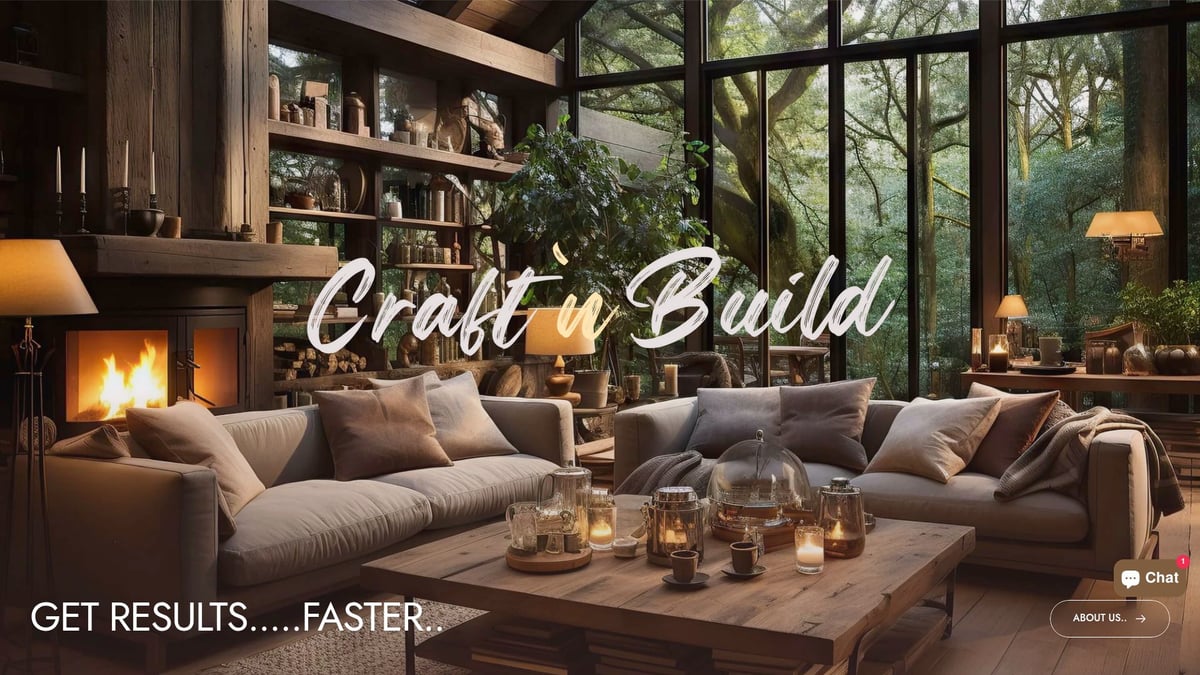
These resources minimize errors by allowing you to preview changes before making real-world investments. Beginners and professionals alike benefit from faster planning, greater accuracy, and the confidence to make informed decisions. Using Easy 3D CAD for Everyone, you can bring your interior design step by step plans to life, ensuring every inch of your space is optimized and aligned with your goals.
Whether you are reimagining a single room or an entire home, leveraging digital tools places professional-grade planning within reach.
Step 3: Concept Development and Design Schemes
Developing your concept is where vision turns into reality. This phase of the interior design step by step process is about refining your ideas, choosing a direction, and setting the visual tone for your space. In 2025, a thoughtful concept ensures your home feels both current and timeless.
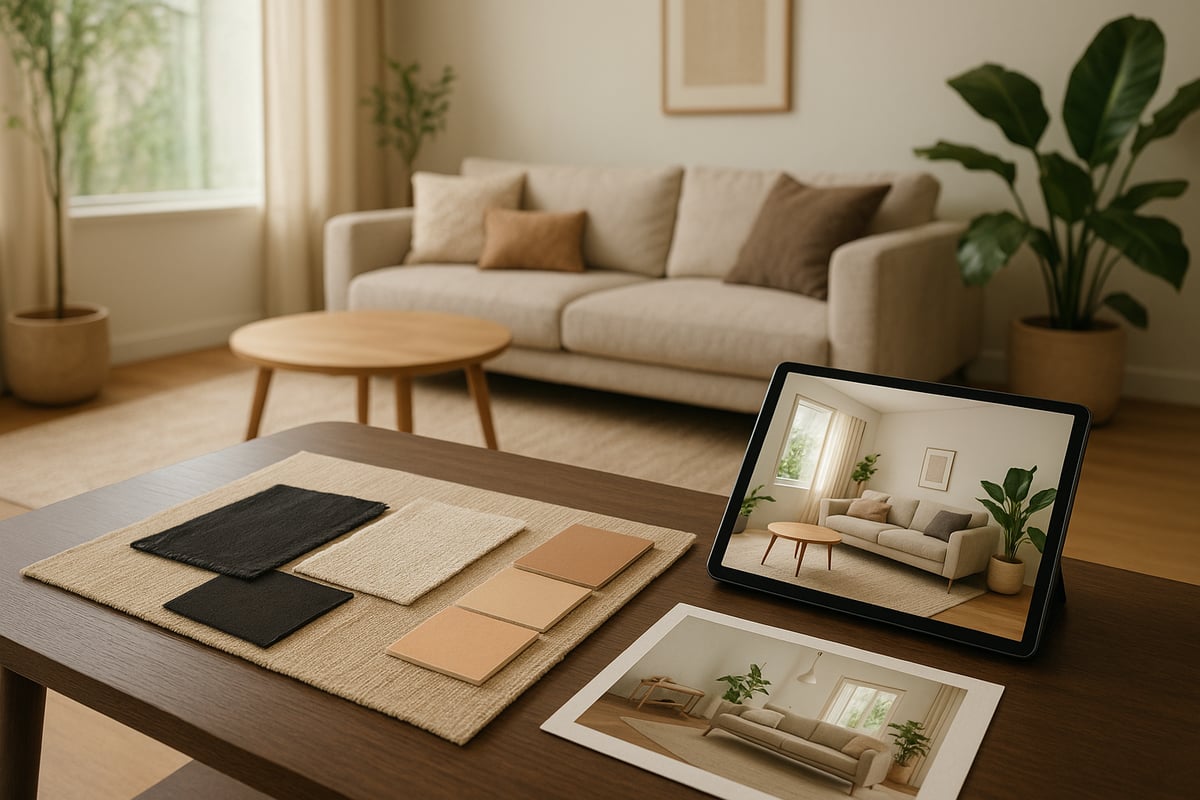
Selecting a Cohesive Style and Color Palette
Choosing your style is a foundational step in the interior design step by step journey. For 2025, styles like Japandi, modern organic, and maximalism are making a strong impact. Each offers unique characteristics—Japandi blends minimalist comfort with natural elements, while maximalism celebrates bold layers and expressive décor.
To select a style that truly fits, consider your personality and your home’s architecture. Use inspiration from leading sources and the Casa Decor Trend 2025 Guide to explore what's trending and what feels authentic to you.
Color palette selection should be intentional. Earthy tones, warm neutrals, and nature-inspired hues are prominent this year. Use color psychology to set the right mood—soft greens for calm, rich blues for focus, or terracotta for warmth.
A quick comparison of 2025 style elements:
| Style | Key Colors | Notable Features |
|---|---|---|
| Japandi | Soft taupe, sage | Clean lines, natural wood |
| Modern Organic | Olive, sand | Textures, biophilic touch |
| Maximalism | Jewel tones | Pattern, layered décor |
Gather paint chips, fabric samples, and photos to visualize how your choices work together. The interior design step by step method ensures your palette and style feel cohesive, not chaotic.
Materials, Finishes, and Textures
Material selection shapes both the look and feel of your design. In the interior design step by step process, prioritizing sustainability and innovation is key for 2025. Choose materials that are durable, eco-friendly, and suitable for your lifestyle.
Mixing textures creates depth and interest. Consider combining:
- Wood flooring for warmth and grounding
- Metal fixtures for a modern edge
- Textiles like linen or velvet for softness
- Stone or recycled glass for a tactile, sustainable surface
Finishes also matter. Matte finishes offer a contemporary, understated vibe, while glossy surfaces reflect light and add vibrancy. Natural versus synthetic choices affect maintenance and longevity.
For example, pairing reclaimed wood with recycled glass countertops in a kitchen can elevate both style and sustainability. The interior design step by step approach recommends assembling physical or digital sample boards to compare how textures and finishes interact before making final decisions.
Lighting Design Essentials
Lighting is a transformative tool in the interior design step by step guide. Different lighting types serve distinct roles:
- Ambient lighting for overall illumination
- Task lighting for focused activities
- Accent lighting to highlight features
- Decorative lighting as a statement piece
Effective lighting design means layering these sources to achieve both function and atmosphere. Plan for natural light during the day and adjustable artificial lighting for evening use.
Integrate smart lighting systems for energy efficiency and flexibility. These can be programmed to shift color temperature or brightness throughout the day, enhancing well-being and reducing energy consumption.
Imagine a living and dining area where pendant lights define the dining zone, floor lamps provide reading light, and smart controls adjust ambiance for entertaining. The interior design step by step methodology ensures lighting supports every activity and mood in your space.
Creating Mood Boards and Digital Renderings
Mood boards are visual roadmaps in the interior design step by step process. They help you assemble and refine your ideas, ensuring each element works in harmony before any purchases are made.
Start by collecting images, color swatches, and material samples that capture your desired look. Arrange them on a physical board or use digital tools like Canva or Pinterest for easy edits and updates.
Digital renderings take this a step further by offering a realistic preview of your space. Tools such as SketchUp or Roomstyler allow you to experiment with layouts, colors, and furnishings in a virtual environment.
For example, creating a mood board for a serene bedroom might include images of soft green linens, light wood, and botanical prints. Renderings then show how these choices translate into a cohesive, inviting retreat. This interior design step by step practice reduces the risk of costly mistakes and boosts your confidence in the final outcome.
Step 4: Sourcing Materials, Furniture, and Decor
Sourcing the right materials, furniture, and decor is a pivotal phase in any interior design step by step journey. Every decision impacts not only the look and feel of your space, but also its longevity and sustainability. This stage transforms your plans into tangible elements, giving your vision a foundation rooted in smart choices.
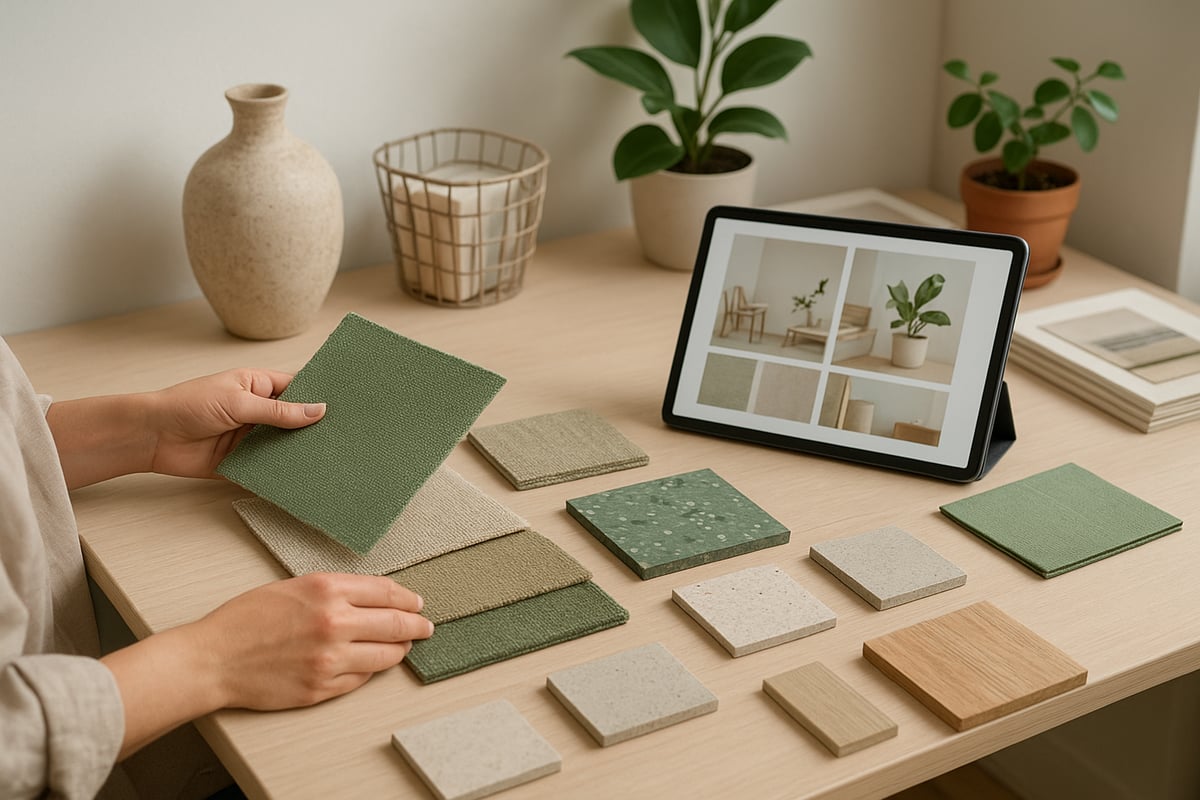
Researching and Selecting Materials
Begin your interior design step by step process with diligent material research. Carefully vet suppliers for reputability and transparency. Compare material samples for quality, cost, and sustainability. Prioritize options that align with your values and the latest trends, such as biophilic elements and recycled materials. As highlighted in Eco-friendly Design in 2025, sustainable choices are increasingly accessible and impactful.
Create sample boards—physical or digital—to review finishes, colors, and textures before making final decisions. Pay close attention to lead times and availability. In 2025, global supply chains can affect timelines, so request estimated delivery dates and plan accordingly.
Material Comparison Table
| Material | Cost | Sustainability | Durability | Lead Time |
|---|---|---|---|---|
| Reclaimed Wood | Medium | High | High | 3-4 weeks |
| Engineered Quartz | High | Medium | Very High | 2-3 weeks |
| Bamboo Flooring | Low | Very High | Moderate | 1-2 weeks |
For example, sourcing eco-friendly paints and reclaimed wood can lower your carbon footprint and add unique character to your home. Always keep your interior design step by step blueprint in mind to ensure material choices support your long-term goals.
Choosing Furniture and Fixtures
Selecting furniture and fixtures is where function meets style in your interior design step by step plan. Assess each piece for comfort, durability, and how it fits your overall design scheme. Compare custom and ready-made options to balance your budget and timeline.
Custom vs. Ready-Made Furniture Table
| Feature | Custom | Ready-Made |
|---|---|---|
| Personalization | Fully customizable | Limited options |
| Cost | Higher | Lower |
| Lead Time | 6-12 weeks | 1-3 weeks |
Integrate statement pieces that express your personality, but also invest in versatile basics for long-term function. Modular furniture, for example, is ideal for flexible living spaces and can adapt as your needs evolve. Always reference your interior design step by step goals to maintain cohesion and practicality.
Accessorizing for Personality and Depth
Accessories are the finishing touch in your interior design step by step process, adding warmth and individuality. Layer textiles such as throws, cushions, and rugs to introduce texture and comfort. Incorporate art, plants, and decorative objects for visual interest.
Mix vintage finds with modern decor to create a curated and timeless look. Personal mementos or collections can tell your story and foster a sense of belonging. For a striking gallery wall, arrange frames in a balanced composition, mixing sizes and styles for added depth.
Accessory Layering Tips
- Start with a neutral base and add pops of color.
- Vary heights and shapes for dynamic displays.
- Use odd-numbered groupings for visual harmony.
Keep your interior design step by step strategy at the forefront to ensure each accessory enhances your space without causing clutter.
Working with Vendors and Managing Orders
Successful execution in your interior design step by step journey depends on strong vendor relationships and organized order management. Build trust with suppliers and local artisans by communicating clearly and respecting timelines. Track all orders, deliveries, and receipts in a dedicated app or spreadsheet.
Be prepared to handle returns, exchanges, or damage claims efficiently. Inspect every item upon arrival and document with photos for accountability. In complex projects, such as a multi-vendor bathroom renovation, coordinate delivery windows to prevent delays and ensure seamless installation.
Vendor Management Checklist
- Confirm order details and delivery dates.
- Inspect goods immediately on arrival.
- Document discrepancies with photos.
- Communicate issues promptly for resolution.
By staying proactive and detail-oriented, you reinforce the success of your interior design step by step approach, paving the way for a finished space that truly reflects your vision.
Step 5: Implementation and Project Management
Executing your interior design step by step plan is where your vision becomes reality. This stage demands careful coordination, clear communication, and proactive management to ensure your project stays on track and delivers the results you expect.
Hiring and Coordinating Professionals
Deciding between DIY and hiring experts is a crucial part of the interior design step by step process. Some tasks, such as painting or assembling furniture, may be suitable for confident DIYers. However, complex work like electrical, plumbing, or structural changes typically requires licensed professionals.
To choose the right team, vet candidates by checking references, reviewing portfolios, and verifying credentials. Always request detailed quotes and ensure all expectations are documented in writing. Set up clear communication channels, such as weekly check-ins, to avoid misunderstandings and keep your interior design step by step project cohesive.
Here is a quick comparison:
| Task Type | DIY Potential | Professional Needed |
|---|---|---|
| Painting | High | Low |
| Plumbing | Low | High |
| Cabinetry | Moderate | Moderate/High |
| Electrical | Low | High |
For those looking to enhance their project management skills, consider exploring Craftn Build Academy Courses for expert-led guidance on the interior design step by step journey.
Overseeing Construction and Installations
Before work begins, prepare your space by removing valuables, protecting surfaces, and confirming access points. A well-organized schedule, with clear sequencing of tasks, is essential for a smooth interior design step by step implementation.
Typical phases include demolition, structural work, installations, and finishing. Delays can arise from material shortages or unexpected discoveries. Stay flexible and communicate promptly with your team to resolve issues quickly.
A real-world example: when replacing flooring throughout a home, schedule the installation room by room to minimize disruption and allow for continued daily living. Always keep your timeline visible and updated as your interior design step by step project progresses.
Quality Control and Problem Solving
Consistent oversight helps maintain quality and ensures your interior design step by step vision is realized. Schedule regular site visits or virtual check-ins to monitor progress, review workmanship, and address concerns early.
Keep a photo log and written reports to track milestones and identify potential issues. If problems arise, such as a tile pattern misalignment, discuss solutions immediately with your contractor to avoid costly rework.
Documenting each step allows for transparency and accountability. Proactive problem solving is key to a successful interior design step by step outcome.
Staying on Track: Budget and Timeline Management
Effective budget and timeline management can make or break your interior design step by step project. Use project management apps to track expenses, receive reminders for upcoming deadlines, and adjust plans when needed.
Build in a contingency fund, typically 10-20 percent of your total budget, to cover unexpected expenses. Maintain open communication with your team and review your budget regularly to avoid surprises.
Transparency is essential. Share progress reports with stakeholders and adjust your strategy as challenges arise. By following these practices, your interior design step by step journey will stay organized, efficient, and rewarding.
Step 6: Styling, Finishing Touches, and Reveal
Styling is where your interior design step by step journey comes alive. This stage weaves together every decision, layer, and detail, transforming your space from a construction zone into a polished, welcoming environment. Thoughtful finishing touches make all the difference, infusing personality and warmth into your home.
Final Styling and Layering
Begin by arranging furniture to encourage both flow and comfort. Place larger pieces like sofas and beds first, then layer in accent chairs and tables. This method ensures your layout supports daily routines and social gatherings, a crucial step in any interior design step by step process.
Next, add textiles such as rugs, throws, and cushions. These elements introduce softness, color, and pattern. Layering lighting is equally important. Combine overhead fixtures, floor lamps, and table lamps to achieve flexible ambiance throughout the day.
Accessorize with intention. Style shelves with a mix of books, decorative objects, and personal mementos. Place trays, vases, or sculptural pieces on tables to add dimension. For inspiration on the latest styling approaches, consider exploring Interior Design Trends 2025 for current ideas on materials, shapes, and color palettes.
A real-world example: Transform a blank living room into a cozy retreat by layering a patterned rug, velvet cushions, woven baskets, and a statement pendant lamp. These steps define the final stage of your interior design step by step journey.
Art, Greenery, and Personal Accents
Artwork creates focal points and sets the emotional tone for a room. Hang pieces at eye level, considering scale and proportion relative to your furniture. Large canvases or gallery walls above a sofa or bed can anchor the space.
Bring in greenery for vibrancy and air quality. Choose low-maintenance plants for busy households or dramatic statement plants like fiddle leaf figs for visual impact. Mixing plant heights and textures adds a lush, organic feel.
Personal items make your space truly yours. Display travel souvenirs, family photos, or cherished heirlooms in visible spots. These accents tell your story and elevate the interior design step by step approach from generic to deeply meaningful.
For example, a bold abstract painting above the fireplace or a curated display of potted herbs in the kitchen can become signature elements in your home’s design.
Professional Photography and Sharing Your Space
With styling complete, prepare your home for photography. Tidy up, remove clutter, and adjust lighting to highlight textures and colors. Natural light is ideal, but supplement with lamps as needed to reduce shadows.
Capture before-and-after images to document your interior design step by step transformation. Use wide shots to show entire rooms and close-ups to highlight details. For social media or portfolios, stage vignettes—styled corners or tabletops—to showcase your design sense.
Interior designers recommend shooting from multiple angles and at different times of day. This approach lets you reveal the full beauty of your finished project and share your creative journey with confidence and pride.
Final Walkthrough and Punch List
Before considering your project complete, conduct a thorough walkthrough. Inspect every room, surface, and feature to spot any issues, from paint touch-ups to minor hardware adjustments. This attention to detail ensures your interior design step by step process ends on a high note.
Create a punch list—a checklist of outstanding items needing correction. Common examples include adjusting cabinet doors, fixing light switches, or touching up wall paint. Assign responsibility and deadlines for each item.
Only sign off when every punch list item is resolved to your satisfaction. This careful review guarantees you enjoy a flawless, functional space, and brings closure to your interior design step by step adventure.
Step 7: Maintenance, Evolution, and Future-Proofing
Maintaining and evolving your space is essential for lasting satisfaction and value. The interior design step by step approach does not end at installation; it includes ongoing care, thoughtful updates, and planning for the future. Use this phase to protect your investment, adapt to life’s changes, and keep your home inspiring year after year.
Caring for Your New Space
Ongoing maintenance is the final, crucial step in the interior design step by step journey. Regular cleaning routines keep surfaces, fabrics, and finishes looking their best. For example, natural stone countertops should be sealed periodically and cleaned with pH-neutral products to avoid etching.
Protect high-traffic zones by adding area rugs, using furniture pads, and rotating cushions to prevent uneven wear. Address spills or stains immediately to extend the life of textiles and upholstery.
A maintenance checklist can help you stay organized:
- Dust and vacuum weekly
- Wipe down surfaces with appropriate cleaners
- Inspect for signs of damage or wear
- Schedule seasonal deep cleans
Staying proactive ensures your design remains fresh and functional.
Adapting and Evolving Your Design
Your interior design step by step plan should account for change. Life evolves, and so should your space. Simple updates like swapping throw pillows, rotating art, or introducing new plants can refresh your home for each season.
Major life events may require bigger changes. Modular furniture can be rearranged for growing families or remote work needs. Keeping up with current trends is also key. Resources like the 2025 Interior Design Forecast help you anticipate shifts in materials and color palettes, ensuring your design remains relevant.
Adaptability is a hallmark of great design—plan for flexibility.
Staying Inspired and Connected
Continued inspiration is vital to the interior design step by step process. Follow design blogs, print magazines, and social media accounts to discover new ideas and products. Join online communities or local workshops to exchange tips and stay motivated.
Participate in design challenges to push your creativity and connect with like-minded enthusiasts. These experiences expose you to fresh perspectives and help you refine your style.
A steady stream of inspiration keeps your space evolving in ways that reflect your personality.
Leveraging Your Experience for Future Projects
Documenting your interior design step by step process is invaluable for future endeavors. Keep a digital portfolio with before-and-after photos, mood boards, and notes on lessons learned. Track favorite suppliers, materials, and tools.
This record builds your confidence and serves as a resource for larger or more complex projects down the line. Share your successes with friends and family to inspire their journeys.
With each completed project, you become more adept at creating spaces that grow and change with you.
Now that you’ve explored each step of transforming your space—from defining your vision to the final styling touches—you’re ready to bring your ideas to life with confidence. Interior design is all about blending creativity with practical know-how, and the right guidance can make every phase smoother. If you’re eager to deepen your skills and put this blueprint into action, why not take the next step? Get started with Interior Design and discover practical techniques, insider tips, and real-world strategies designed to empower you on your journey. Your dream space is closer than you think.

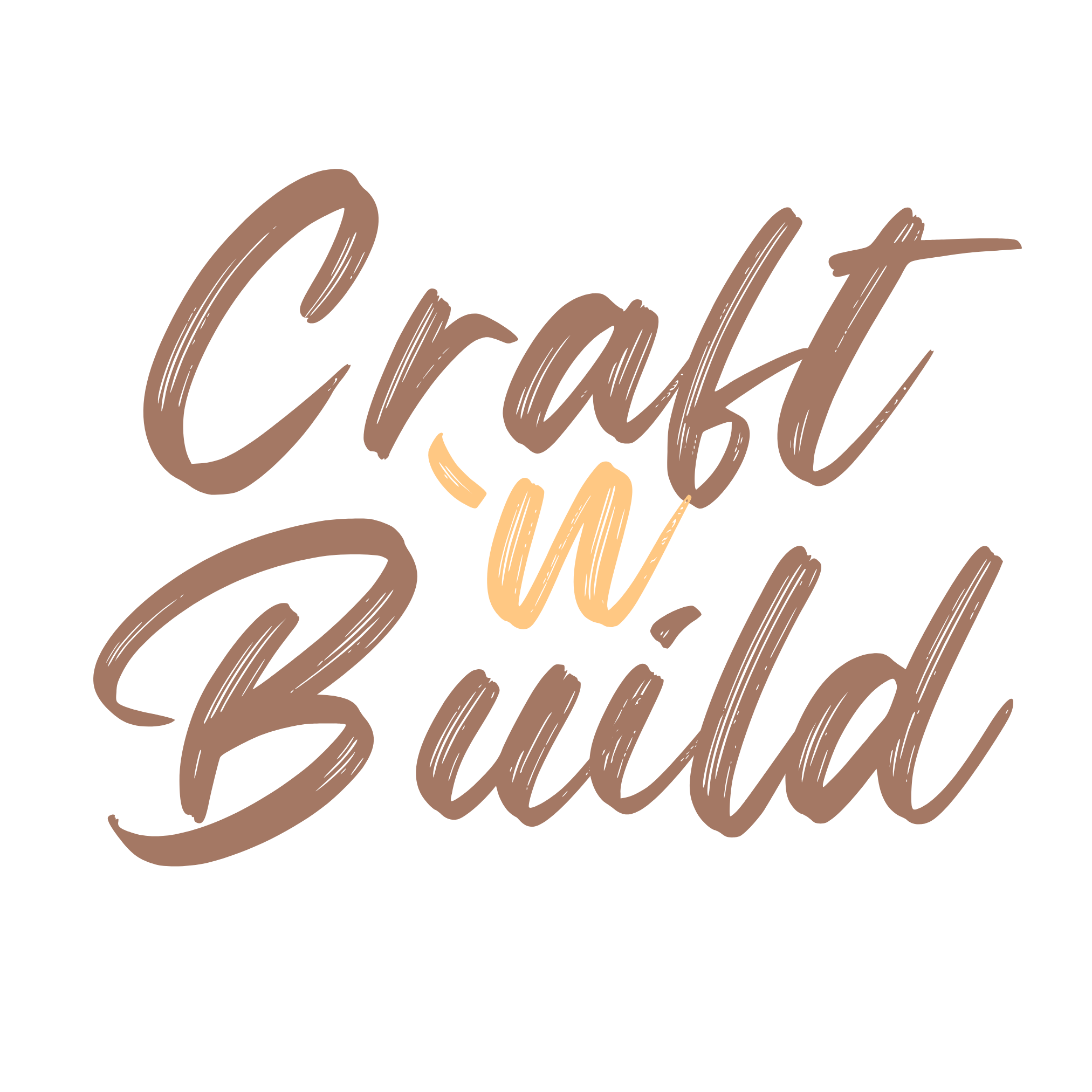

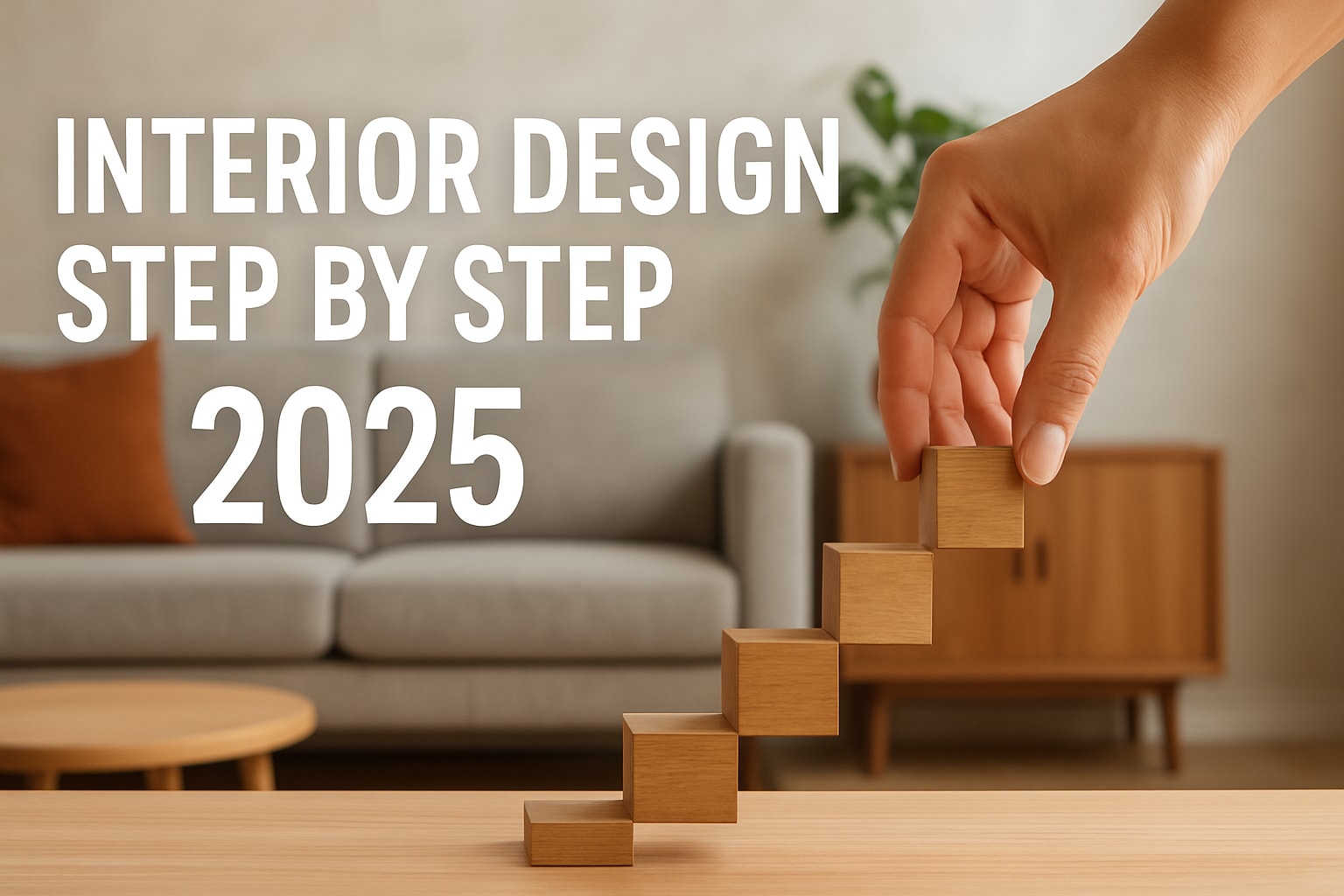
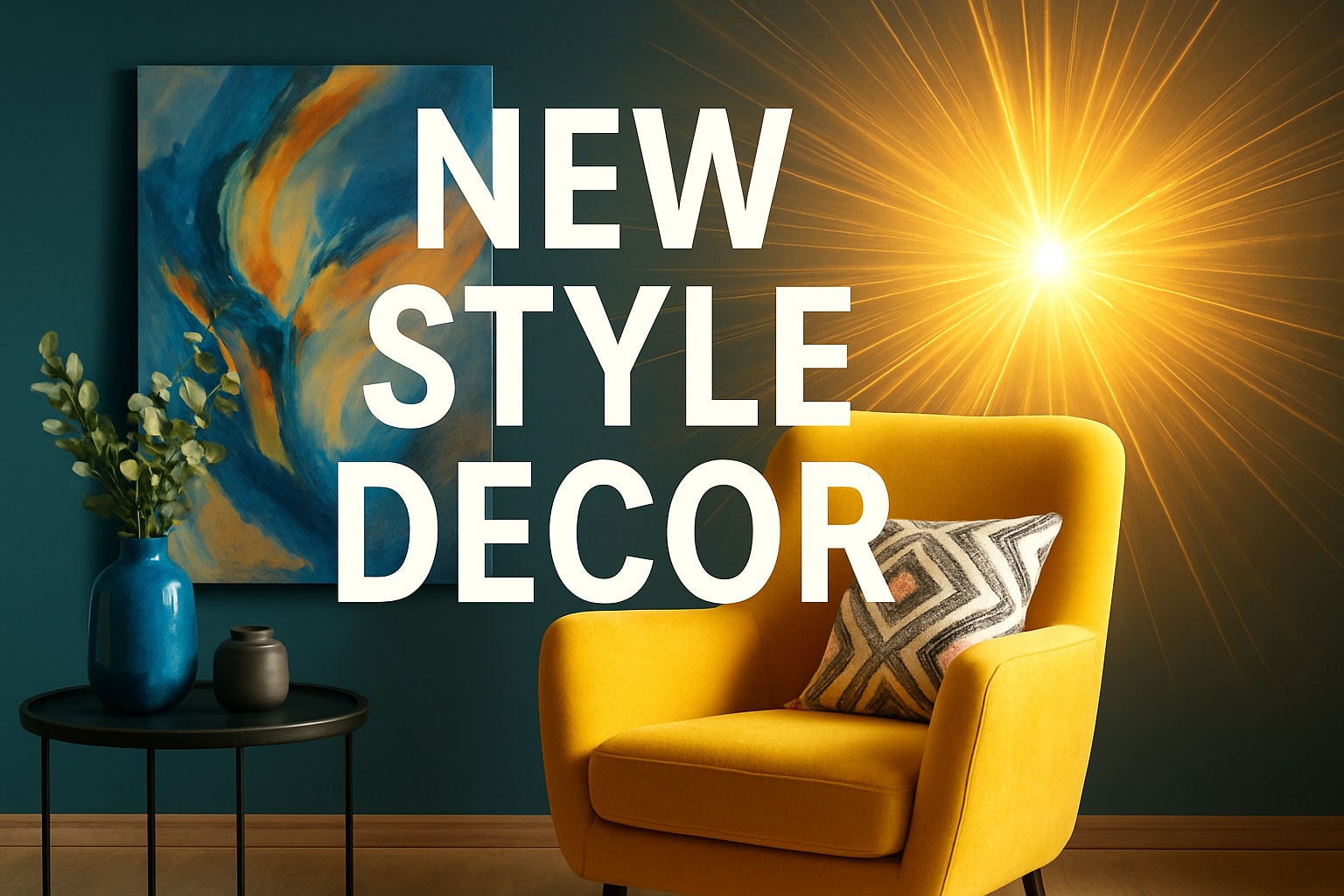
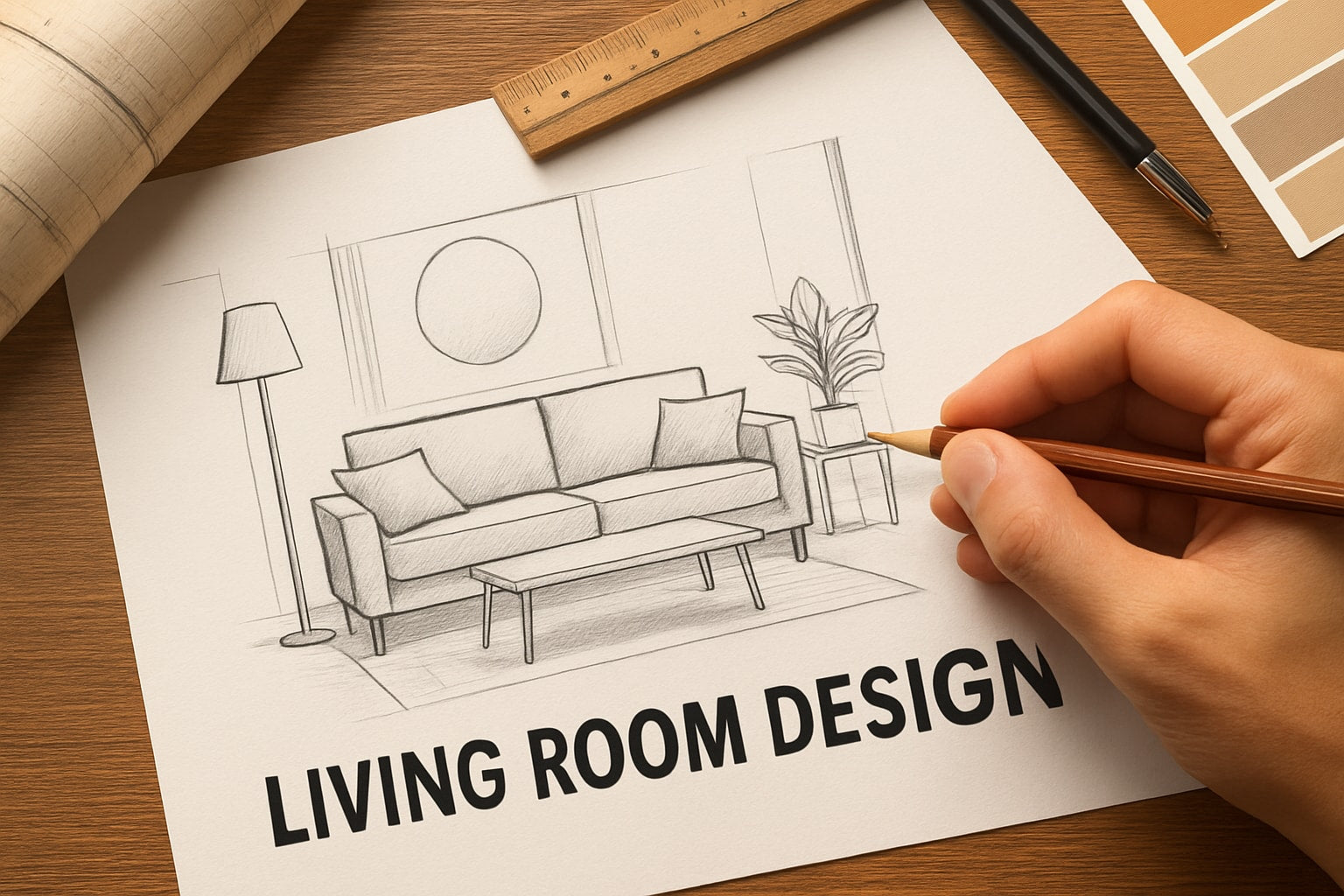
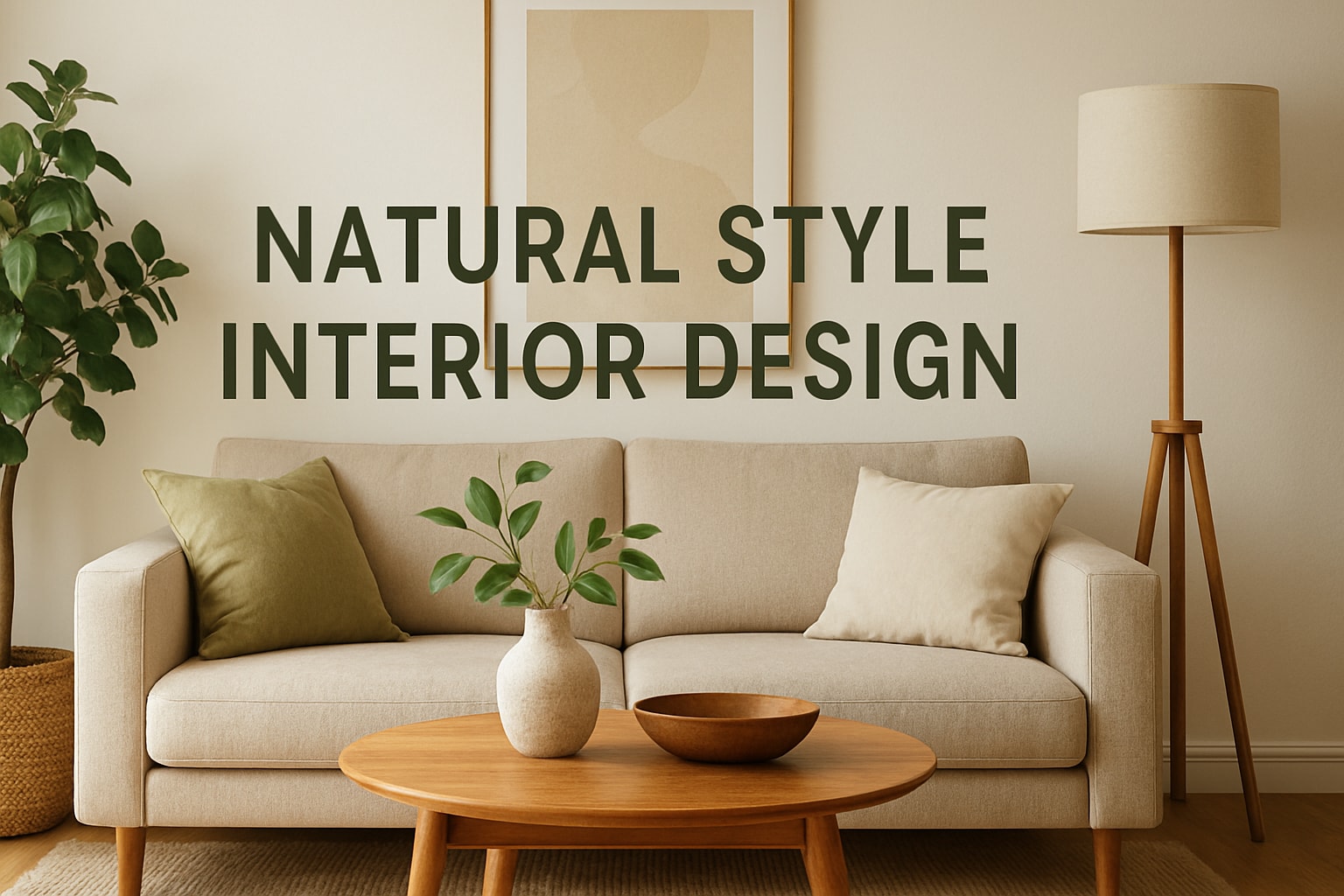
Share:
2025 home decor trends: The Essential Layout Decor Guide for 2025
furniture making guide: The Complete Guide for Beginners 2025